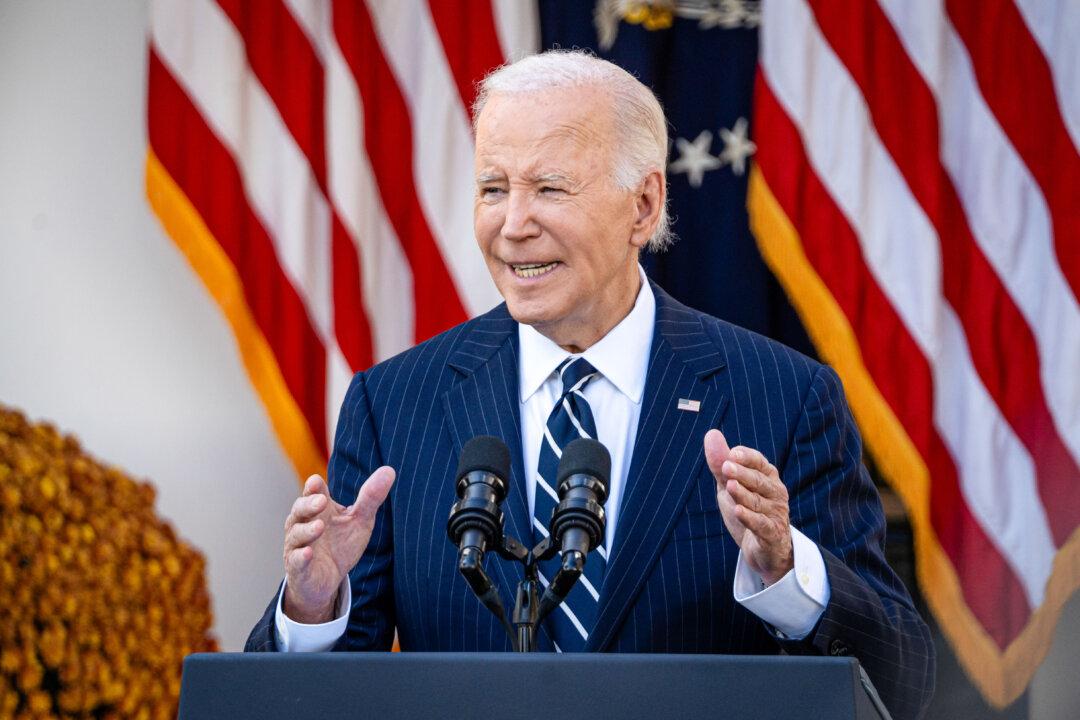President Donald Trump is striking back at Beijing by asking his administration to identify $200 billion worth of Chinese goods for additional 10-percent tariffs.
“We have no choice. This should have been done many years ago,” Trump said at the National Federation of Independent Business’ 75th-anniversary celebration on June 19.
“China has been taking out $500 billion a year out of our country and rebuilding China.”
The White House’s top trade advisor, Peter Navarro, said Beijing “may have underestimated the resolve of President Donald J. Trump” by refusing to meet the U.S.' trade demands.
“If they thought that they could buy us off cheap with a few extra products sold and allow them to continue to steal our intellectual property and crown jewels, that was a miscalculation,” he told reporters on a June 19 conference call.
The United States demands that China cut the trade deficit by $200 billion and stop stealing American technology.
Navarro, a sharp critic of Chinese trade policies, said the president’s action to impose new tariffs is both “courageous and visionary.”
“[Trump] has given China every chance to change its aggressive behavior,” he added.
Last year, China was given 100 days to come up with proposed structural changes. There were numerous meetings with Chinese delegations, but none of these efforts resulted in any progress, he explained.
As a result, the United States announced on June 15 that it is moving ahead with a 25 percent tariff on $50 billion worth of Chinese goods. The action prompted an immediate response from China, which announced it would raise tariffs on an equal amount of U.S. goods, including beef, poultry, tobacco, and cars.
“This latest action by China clearly indicates its determination to keep the United States at a permanent and unfair disadvantage,” Trump said on June 18. He asked the U.S. Trade Representative to identify $200 billion worth of Chinese goods for additional tariffs.
Washington is ready to impose more tariffs on top of $200 billion if China continues to retaliate, Trump said.
The tariffs will go into effect after the legal process is complete, according to the White House.
Beijing is running out of American goods it can slap tariffs on, experts say, simply because it doesn’t import as much American goods compared to what the United States imports from China.
“China made a major mistake early Saturday morning when it pledged to mirror the initial 25 percent U.S. tariffs on $50 billion of their exports,” wrote Derek Scissors, Asia economist at the American Enterprise Institute.
According to Scissors, Beijing walked down a path where it is guaranteed to a hit a wall since it has a limited number of measures to use in a tariff war.
China, however, can still retaliate using some other measures, he wrote.
“The bilateral relationship is large and multifaceted; there are many choices. An obvious one is to punish American firms operating in the PRC,” he said.
Although China has a handful of other measures, according to experts, they are not as easy to implement as tariffs.
Trump made it clear that he would not tolerate any type of Chinese response that harms American businesses, whether it is a farmer in Iowa or an American company in Shanghai, Navarro said.
For decades, the Chinese regime’s protectionist and trade-distorting policies have hurt American industries.
China uses many tactics to steal technology, such as forcing foreign companies to partner with domestic firms and hand over their intellectual property and know-how to gain access to the Chinese market.
The Chinese Communist Party wants to turn China into a “manufacturing superpower” by replacing foreign competitors in global high-tech markets.
Trump will not allow China to use its established unfair trade practices and illicit behavior to capture the so-called “Made in China 2025” industries, said Navarro.





